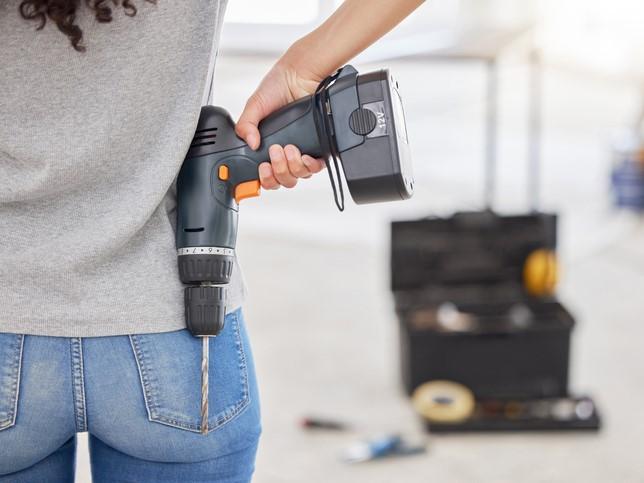In 2018, I wrote a piece published by Times Higher Education titled “Time to end bias against academia’s female entrepreneurs”. It aimed to raise awareness of women’s under-representation as founders of university spin-out (or spin-off) companies. Four years later, I am writing again for THE as the proportion of women spin-out founders remains very low indeed.
The latest report on this area, commissioned by the Royal Academy of Engineers, shows that only 11.2 per cent of spin-outs have at least one woman founder. One of the key barriers as highlighted by research we conducted at Oxford Brookes University, funded by the EPSRC as part of its Inclusion Matters programme, is that it is harder for women in STEM to secure investments to develop and grow their companies.
As one woman founder who took part in our research said: “It is harder for women to raise money from the old boys’ club.” This issue needs to be tackled head on to bring together investment, science and gender equality. Incidentally, it is also a powerful recipe for growing the economy – something all politicians agree on, although they differ in their approaches on how to do it.
- Breaking barriers for women: closing the gender health gap in academia
- Address STEM inequality by reconceiving merit
- Women in academia are doing too much non-promotable work – and that has to stop
To stimulate debate about investing in women in STEM and, more importantly, taking action, we published a discussion paper. This reviewed key evidence on the barriers faced by women in securing investments and looked at innovative approaches to close the gender investment gap. The evidence from our own research and that reviewed in the discussion paper points to gender bias in a predominantly male investment community. And if the investment community is the problem, they need to become part of the solution if we want to change mindsets and make progress.
In conversation with four women investors who are proactively addressing the gender investment gap from within the investment community, we discussed what can be done. We started by reflecting on the need for the investment community to become more gender diverse. For example, recent research shows that only 14 per cent of business angels are women. Does this matter? Yes, said Jenny Tooth OBE, executive chair of the UK Business Angels Association, since the research also found that 25 per cent of women angels’ deals are in women founders. Her view is that this is vital ammunition to spearhead the national Women Backing Women campaign to increase the number of women investors across the UK.
Women investors also better understand some of the problems that women scientists are trying to solve. They can spot investment opportunities likely to be dismissed by men investors. Kris Vulgan, co-founder and managing partner at Ferocity Capital in the US, and executive in residence at Columbia Technology Ventures, gave the example of how as a woman herself she recognised the importance of the research into urinary incontinence and the potential of a start-up, whereas male investors did not think there was a big enough market and so had not funded the idea.
It is also important to debunk two myths around women entrepreneurs in academia or otherwise: that they are averse to risk; and there is no pipeline of future entrepreneurs. Lynne Cadenhead, investor, entrepreneur, visiting professor at Edinburgh Napier University and a scientist by background, thinks that women are not risk averse, but they have a different approach to risk, explaining that this is advanced risk awareness and that the prudence it brings with it is really beneficial when starting a business.
Anne Ravanona, founder and CEO of Global InvestHer, stresses the importance of ensuring that women founders are visible in the innovation ecosystem to combat the idea that there is no pipeline. To this end she has developed a free global directory of women entrepreneurs that includes many women founders in STEM, to give their companies visibility with both potential customers and investors. This is matched by the global directory of “women founders friendly” investors that she has also established to help women seeking investments.
However, we cannot just point the finger at investors; universities also have a big role to play. Entrepreneurship is high on the HE agenda, and the number of spin-outs established by an institution is one of the metrics that feeds into the Knowledge Exchange Framework. But how conducive is university culture to encouraging and supporting academic entrepreneurship, especially for women in STEM who want to take their research outside the lab?
Our research highlighted a tension between a “traditional” approach to an academic career and those focusing on innovation and spin-out creation. As a woman founder said: “A risky activity like a spin-out may not be valued if you apply for a lectureship, mainly because you don’t generate papers and you are primarily judged by the number of publications.”
While this is arguably an issue for both genders, it compounds other problems faced by women in STEM. The result? Society misses out on key innovations and new perspectives that women scientists can contribute to the world.
Therefore, universities must commit to support more women in STEM to spin out. This, however, does not mean more training and mentoring initiatives trying to “fix” the women, but action to fix the institutions. To this end we have developed a gender-inclusive academic entrepreneurship framework to help universities tackle structural barriers that hinder women’s participation in spin-out leadership. Informed by the experience of female founders, it takes institutions through a process of self-reflection to make positive changes.
For example, the tension between a “traditional” academic career and one focused on innovation can be resolved by adopting transparent and clearly communicated criteria on how spin-out activities are valued and rewarded in academic promotions. Moreover, universities need to provide dedicated time to develop academic entrepreneurship and recognise spin-out leadership as part of an academic job and not as an add-on.
Finally, universities should capitalise on the momentum being generated by influential women investors. They should help women spin-out founders access investment by joining forces with investors who have signed up to the Investing in Women Code to close the gender investment gap.
Simonetta Manfredi is a professor of equality and diversity management, and the director of research, innovation and enterprise at Oxford Brookes University. Her research expertise is primarily focused on gender and leadership, age discrimination and retirement policies, work-life balance and applied diversity policy research in higher education.
If you would like advice and insight from academics and university staff delivered direct to your inbox each week, sign up for the Campus newsletter.




comment